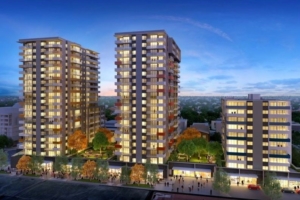Buying off the plan can be trickier than a regular purchase, but thousands of Ugandans do it every year.
Buying off the plan is when you sign a contract to buy a dwelling before it has been built. If done correctly, it can deliver big rewards, namely in terms of location and price.
But, as you might expect from a process that involves buying something that doesn’t yet exist, it’s also not without its problems, and so it’s imperative that you do your homework before signing up.

Here’s our step-by-step guide to buying off the plan.
- Work out whether its right for you
Before you commit to buying off the plan, you need to make sure it’s the right option for you and your family.
It often takes 12 to 18 months before you can move in, and even longer if there are construction delays. So you need to ask yourself if you can hold out that long.
The long wait also means you need to ask yourself whether an off-the-plan property is right for you in the long run.
For example, if you think you may start a family in the future, purchasing a unit off the plan might not be a good idea, as you might want a garden and a little more room for your children to play in.
And you also need to consider the numerous risks, which include:
Falling market: this is when property prices are dropping and your apartment is no longer worth the amount you agreed to pay for it. This can make it difficult to get finance.
Low quality construction: you may find the end product doesn’t meet your initial expectations.
Dodgy developers: some businesses go bankrupt, some use legal loopholes, and some fail to deliver the apartment to the promised specifications.
Interest rate hikes: rates can go up before you settle, so factor in a buffer zone of at least two per cent when doing the numbers.
- Talk to your bank
Every lender has different policies on off-the-plan properties, so it’s important early on in the process to find out what these are.
Typically, lenders want a 20% deposit. But, worried about oversupply in the market, some lenders and banks consider off-the-plan developments high-risk investments, and subsequently require bigger deposits before providing a loan.
In very rare cases, this can be up to 50% of the purchase price, so it’s very important you talk with your lender at the beginning of the process to work out how much deposit you’ll need and how much they’ll be willing to lend.
Get to know their policies, and remember to stay up to date on any changes in the lead up to your settlement.
- Research the developer
Unfortunately, there are a lot of cowboys in the property game. Which is why it’s important you interrogate the developer’s reputation before signing a contract.
The risks are significantly reduced if you choose to buy an off-the-plan property from a company that has a proven track record of delivering off-the-plan developments to a high standard.
Visit previous projects to see their work, speak with previous buyers, and Google their name to see if they’ve been involved in any scandals in the past.
Also, make sure they have not been previously blacklisted or reported to your state tribunal.
- Understand the market
Market conditions can be tricky to gauge, but it can directly impact the outcome of your off-the-plan purchase.
This is because, with off-the-plan properties, you agree the purchase price when you sign the contract. And so, if property prices increase during the time it takes to build the property, you will end up moving into a property that’s worth more than the amount you paid for it.
Unfortunately, the opposite can also happen, which means, if property prices fall during the construction phase, the property will be worth less than the amount you paid for it by the time you move in.
Consequently, if you’re considering buying an off-the-plan property, keeping an eye on Property Updates the market is an absolute must. Stay up to date by reading content on and seek an independent expert to get advice tailored to your personal circumstances.
- Do the leg work
If you have decided to buy off the plan, it’s time to put your laptop to one side and get off your sofa.
Display suites offer a glimpse into what you can expect from a developer, but they don’t give you the full picture. For that, you’ll need to visit the site where your apartment is being built and ask to be taken on a tour, if possible.
Check out the local area, find out what amenities already exist, and work out whether any new developments may impact your new property.
And also be sure to check out what other developers are offering, so that you can work out whether you’re getting a good deal.
- Customize your apartment
Before you sign a contract, it’s important you make sure all the features you want are included in your contract, as your developer isn’t obliged to include them in your property if they haven’t been confirmed in writing. This advice extends to floor plan changes, colours, material specifications and extras such as heating, cooling and appliances.
Never let a company tell you that they will add missing details later, because they won’t.
Be aware that inclusions are not usually factored into the list price and will cost more.
Also, this is when you should check the layout of your apartment, its location within the building, and its proximity to lifts, stairs, rubbish chutes and common areas.
- Legal advice
Before signing anything, send the contract to your conveyancer or legal adviser.
Don’t go for the cheapest lawyer; hire an expert with proven experience in buying off the plan. They will be able to guide you through sunset clauses and body corporate set-ups, and offer advice on what would happen in the event your developer went into liquidation.
Remember, you have a cooling-off period of up to five days (depending on the state in which the property is located), which means you have up to five days to change your mind if there’s something you feel uncomfortable about.
- Sign a contract
Review the contract to know exactly what you are buying before locking it in.
Once you sign, you will be required to pay a deposit to the developer, which is usually between 5% and 20%. The balance will then be due at settlement, with buyers advised to approach their bank for a home loan roughly three months before this date.
- Settlement
The final stage of buying off the plan is settlement.
It may have taken a long time to get this to point, but that’s no excuse to rush this important process: It’s imperative you do a careful final inspection of the property before you settle.
Bring your sale contract, the list of specifications and inclusions, and a tape measure.
First, inspect the craftsmanship, keeping an eye out for paint drips, window installations, taps and tiling. Make a note of any areas that fall below the standard promised, and demand these issues be addressed.
Measure everything carefully and check all cupboards match your specifications. Builders can substitute materials for similar quality, but you can terminate the contract if anything important is changed or left out.
If it is in your contract, don’t let the developer bully you into accepting anything less. Once you are happy, proceed with settlement.
Considering buying brand new? Browse off-the-plan properties Off-plan Projects




